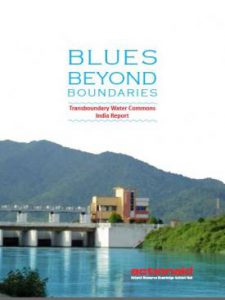Latin America’s private sector is stirring. For businesses, the prospect of having to adjust to a low-carbon economy after the UN’s climate change conference in Paris later this year is an urgent one and dominated discussion at the Latin American and Caribbean Carbon Forum (LACCF) in Santiago, Chile, last week.
“The world will be different after the Paris Conference, and companies want to obtain the maximum amount of information already available,” says Eduardo Sanhueza, consultant to the United Nations Economic Commission for Latin America and the Caribbean (ECLAC), which was one of the event organisers.
While governments work to finalise national emissions reduction plans, also known as Intended Nationally Determined Contributions (or INDCs in the UN’s jargon), various industrial sectors used LACCF as a forum to advance discussions on low carbon development and its implications for business.
“Prior to holding a large Conference of Parties (COP) such as the one to take place in Paris, there will be all kinds of activities at national and regional levels,” says Neeraj Prasad, climate change practice manager at the World Bank Institute.
“This is when the public and private sectors seek out more information and form their opinions,” Prasad added.
But according to Prasad, the Forum should not attempt to influence the Paris negotiations; “we contribute mainly so that the private sector understands what the governments are trying to implement in terms of policies geared towards combating climate change,” he explains.
INDCs in the spotlight
One of the main private sector concerns is understanding how governments will ensure the emissions cuts set out in their INDCs. It will be the first time that developing countries will shoulder a commitment to growing their economies whilst limiting the amount of carbon released into the atmosphere. To meet the targets adopted by governments, various high-carbon sectors such as energyand mining may have to curb production.
And failure to meet their obligations could be very costly; “image is very important,” says Sanhueza, who argues that as with governments, unmet promises can ruin businesses.
Change of focus
The first Latin American Carbon Forum was held in 2006 and was initially tasked with promoting global carbon credit markets and discussing methodologies for carbon counting. But market lows over the last four years meant that the Forum was forced to adjust its focus. Creating new policies for clean development, technology exchange and funding opportunities for projects promoting the low carbon economy became the new priorities.
The forum now accommodates those seeking opportunities to invest in clean development and those looking for finance to make their investments cleaner and more energy efficient Prasad explains. Similar regional fora are also held in Africa and Asia.
Access to funding
The forum also brings together financial institutions like the World Bank, the Inter-American Development Bank (IDB) and the Development Bank of Latin America (CAF) which are the main sources of funding for member countries’ climate change adaptation and mitigation projects. The IDB has 25% of loans specifically earmarked for such operations.
By mobilising resources, these financial institutions can facilitate a “technological revolution”, says Sanhueza. Precedents include the region’s biggest solar energy plant, located in the Atacama Desert in Chile, which was funded by an entity of the World Bank group.
In the same week as the Forum, New Climate Economy released a study showing that investment in low carbon technologies could yield global savings of US$17 billion by 2050. Changing to cleaner means of transportation, energy efficient buildings and proper waste management would incur a reduction of 3.6 gigatons of carbon dioxide (CO2) per year by 2030, more than India’s entire annual emissions.
“Infrastructure investments carried out in [urban] centres in developing countries over the next decades will lead the world towards a path of low or high carbon emissions. The policy and financing environments must change significantly for cities to follow a low carbon development path,” the study recommends.





